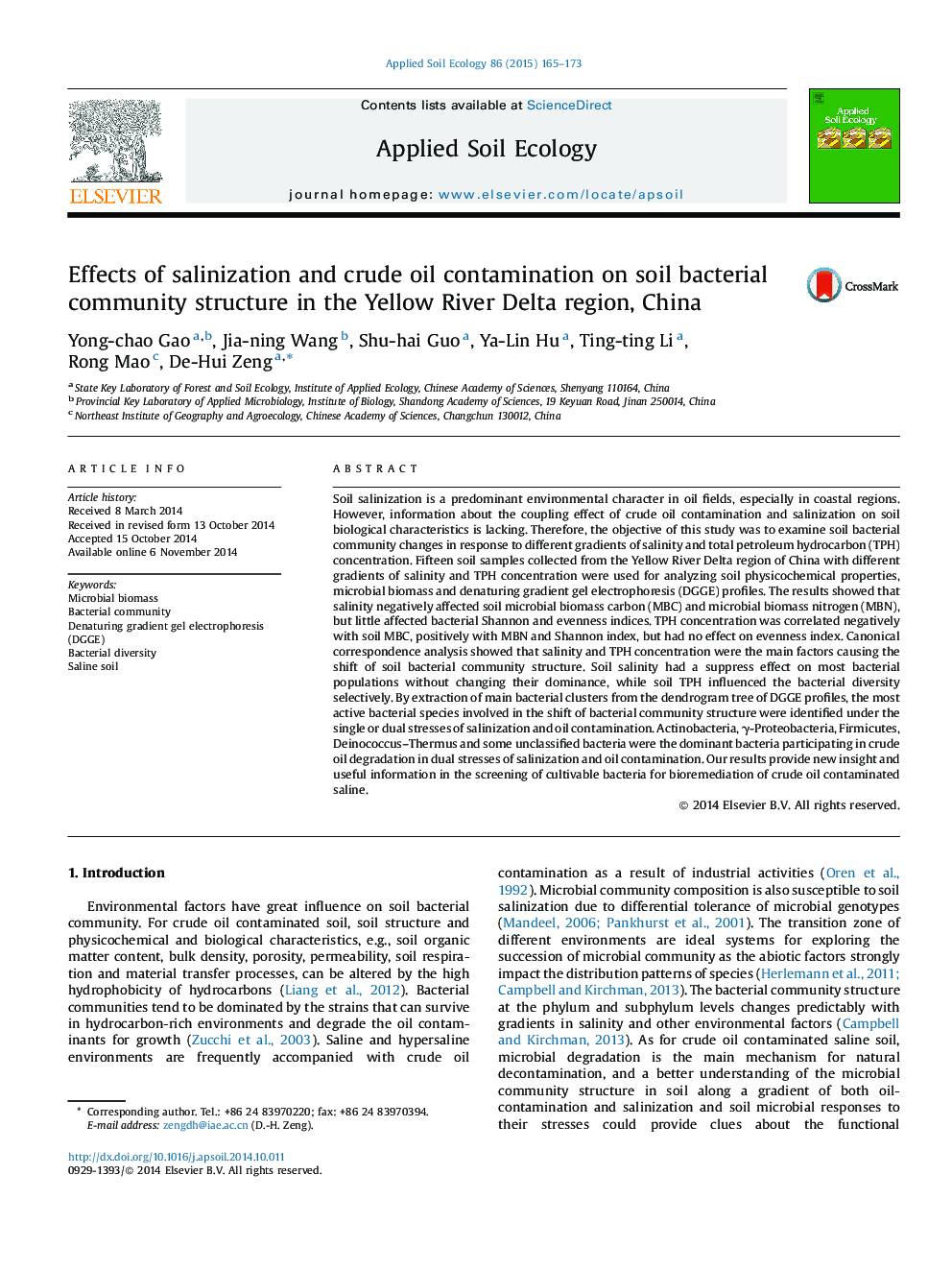| کد مقاله | کد نشریه | سال انتشار | مقاله انگلیسی | نسخه تمام متن |
|---|---|---|---|---|
| 4382104 | 1617797 | 2015 | 9 صفحه PDF | دانلود رایگان |
• Soil bacterial community was studied along a gradient of salinity and TPH.
• Salinization and oil contamination had diverse effects on soil microbial biomass.
• Bacterial community structure was mainly affected by salinity and TPH.
• Dominant taxonomic groups of bacterial community were relatively stable at various environmental stress levels.
• Species composition of bacterial community changed significantly with varying stress levels.
Soil salinization is a predominant environmental character in oil fields, especially in coastal regions. However, information about the coupling effect of crude oil contamination and salinization on soil biological characteristics is lacking. Therefore, the objective of this study was to examine soil bacterial community changes in response to different gradients of salinity and total petroleum hydrocarbon (TPH) concentration. Fifteen soil samples collected from the Yellow River Delta region of China with different gradients of salinity and TPH concentration were used for analyzing soil physicochemical properties, microbial biomass and denaturing gradient gel electrophoresis (DGGE) profiles. The results showed that salinity negatively affected soil microbial biomass carbon (MBC) and microbial biomass nitrogen (MBN), but little affected bacterial Shannon and evenness indices. TPH concentration was correlated negatively with soil MBC, positively with MBN and Shannon index, but had no effect on evenness index. Canonical correspondence analysis showed that salinity and TPH concentration were the main factors causing the shift of soil bacterial community structure. Soil salinity had a suppress effect on most bacterial populations without changing their dominance, while soil TPH influenced the bacterial diversity selectively. By extraction of main bacterial clusters from the dendrogram tree of DGGE profiles, the most active bacterial species involved in the shift of bacterial community structure were identified under the single or dual stresses of salinization and oil contamination. Actinobacteria, γ-Proteobacteria, Firmicutes, Deinococcus–Thermus and some unclassified bacteria were the dominant bacteria participating in crude oil degradation in dual stresses of salinization and oil contamination. Our results provide new insight and useful information in the screening of cultivable bacteria for bioremediation of crude oil contaminated saline.
Journal: Applied Soil Ecology - Volume 86, February 2015, Pages 165–173
